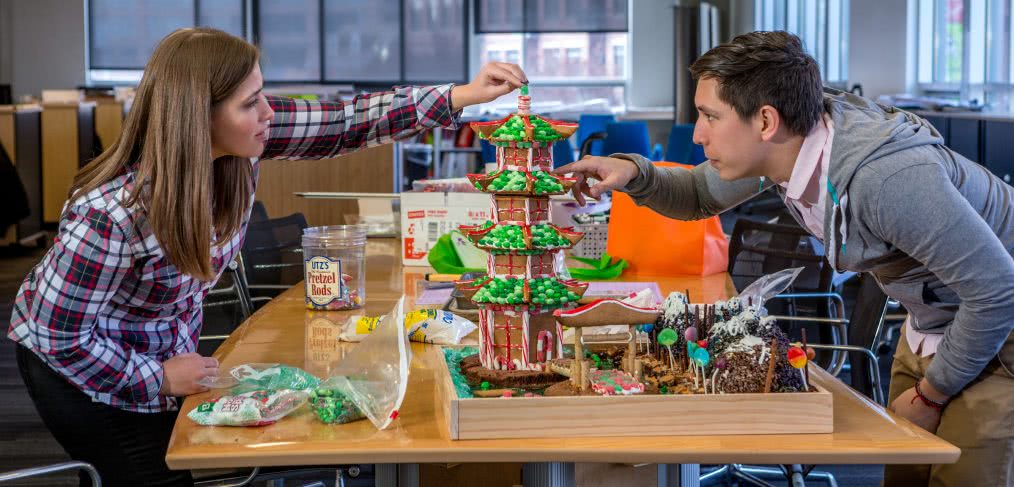
Design News You Can Use—The Power of Play Edition
Looking for a major dose of news you can use? In this edition of Design News You Can Use, Workplace Strategist Joelle Jach explores the delicate dance that is work-life balance and how play can help us stay sane.
Spare change: As we look to the future, it’s hard to ignore the impacts of climate change and urbanization on our cities. For a group of architects and designers, climate change has become the ultimate design challenge, and they’re working through ways to design for the future.
Cut it up: One question we often receive is whether open or enclosed workspaces are the key to a successful workplace. It’s a tough question to answer, and it often leads us to wonder whether it really should be about open vs. enclosed. Why can’t it be both? The decision doesn’t have to be either-or.
Work and play: Coming back to work after a weekend or a vacation can feel really difficult—especially when it feels like all the fun is over. We tend to put off leisure time until all of our work is done, but as a recent study suggests, it may be better to integrate work and play, if only to keep from burning out.
Gotta get down: In the summer, it can be tough to feel motivated at work—especially when Friday rolls around. While some companies offer summer Fridays, this tends to be on a case-by-case basis. Here, Stephanie Vozza argues that we should all have summer Fridays, which leaves more time for the pool.
Happy face: Employee engagement can be a moving target, but it’s no secret that it’s integral to a successful workplace. With more companies trying to focus on employee satisfaction as well as productivity, some companies are finding that the secret may just be emphasizing employee happiness.
Blink and you’ll miss it: In a world where we can have anything instantly and nothing forever, it’s probably not a huge surprise that the pop-up concept is a hit. In a series of experiments, a pair of professors learned just how easy it is to assemble a temporary team, crank out a work product and dissolve into the ether.
Ins and outs: We tend to think that extroverted people are the most successful in business, but with books like Susan Cain’s Quiet, many are learning to embrace the power of an introvert. Still, you might think it’s tough to be introverted if you’re, say, a CEO, but it’s definitely not unheard of.
Building blocks: Many of us have a favorite architect or building. We find ourselves responding in a particular way to certain types of architecture over others. According to researcher and writer Sarah Williams Goldhagen, for better or for worse, our brains are wired to interact with architecture.
Hang up: Try as we might, it can be tough to ignore our cell phones. With emails, texts and other notifications competing with our work for our attention, it can be difficult to tune out—and it’s costing us a lot in terms of time and productivity. A recent study found that phone usage costs an average 8 hours’ lost time in a typical workweek.
Days of yore: While flexibility is typically a workplace perk, it also has its downside. Because we can be available 24/7, there really is no such thing as the 9-to-5 workday anymore. As we continue to search for work-life balance, it’s worth noting that with increased flexibility often comes increased availability—and a need for greater time management.
